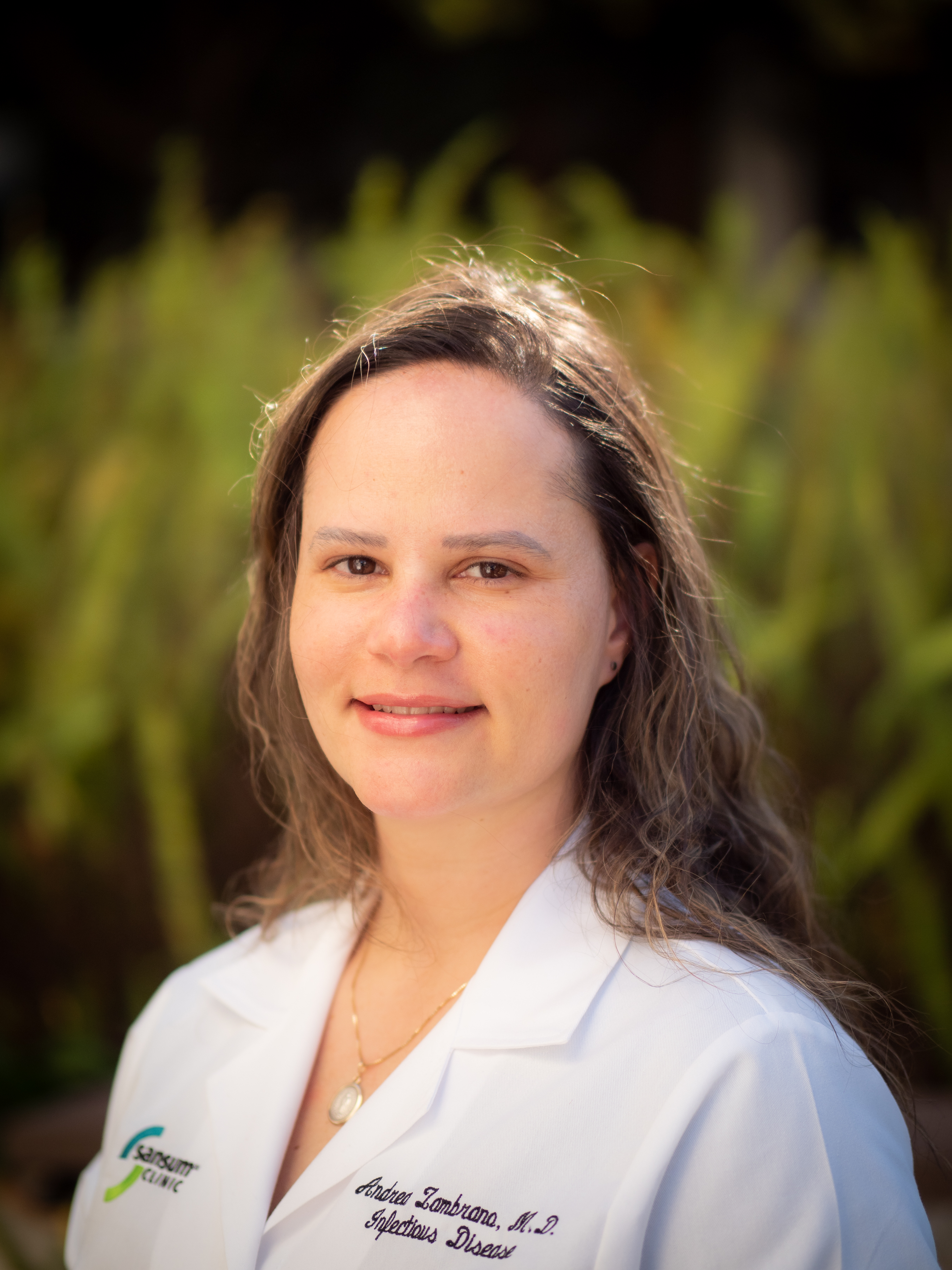Jun 14, 2022, 10:35 AM
by
GoodHealth Magazine
Before the onset of COVID-19, most infectious disease physicians primarily worked out of the limelight, researching how to treat their patients’ symptoms. During the pandemic however, the most highly-trained and experienced infectious disease doctors, including those here in our county, played a key role in assisting public health leaders and helping to care for the most critically-ill COVID-19 patients.
Andrea Zambrano Sequera, MD, (“Dr.
Zambrano”), Sansum Clinic’s newest
infectious disease physician, says her
colleagues here and abroad are focused
on diagnosing and investigating their
patients’ infections, and they prefer in
most cases to fly under the radar. “We
are quirky, nerdy people, detail-oriented,
methodical and analytical,” describes Dr.
Zambrano. “We do not go into this field
to make money, to become famous or
because we care about politics. We do it
because it’s what we love, and we want to
treat the people that are most in need.”

Infectious disease specialists are
meticulous researchers who dig into
the medical data from many sources
including physical exams to determine
what micro-organism may be the
problem. Tropical diseases are not
common in the U.S. outside of Florida,
Louisiana or Hawaii, but the ID team
does treat them often in returning
travelers or immigrants. Infections
in the bone, blood stream, urinary
tract and skin, and valley fever are
common diagnoses here, along with
management of HIV. Care for infectious
diseases involves medications as well
as multidisciplinary coordination with
other doctors and/or surgeons in the
community to optimize a patient’s care.
Dr. Zambrano enjoys the collaborative
nature of her work. Her department
regularly discusses cases and she
can reach out to her many esteemed
connections in academia when an
infection is difficult to unravel.
After medical school in Venezuela, her
home country, Dr. Zambrano completed
her Internal Medicine residency here in
Santa Barbara. She then moved to Seattle
to complete her fellowship training at
the University of Washington, renowned
for its Infectious Disease and Allergy
program. She has an impressive research
resume in preventative ophthalmology
from Johns Hopkins, and has seen
many of the world’s tropical diseases
first-hand, from the inner cities and
Amazon communities within Venezuela,
to Mexico, Nepal, and Tanzania.
Her passion for helping underserved
populations stems from her upbringing
in Venezuela, where battling tropical
diseases is a regular part of life. Working
in the public hospitals, she observed
a great disparity in care between
social classes. This inspired her to
pursue numerous global public health
opportunities in places where care was
needed most, and her life would become
enmeshed with the local people. “It was
humbling and fulfilling to experience
their day to day and live in their homes.
I learned how we can be respectful
culturally, while also bringing medical
care,” shares Dr. Zambrano. Building
personal, compassionate relationships
with patients is important when
physicians are trying to change habits
in order to prevent disease, she adds,
whether that is somewhere across the
globe or here in Santa Barbara.
COVID-19 and the birth of her son,
who is now 9 months old, had already
tempered Dr. Zambrano’s drive for
international travel, so when the rare
opportunity to join the Infectious
Disease Department arose, a chance
to return to the city where she did her
residency at Cottage Hospital, she knew
she could not pass it up. “Working in
research and academia for a while, I had
missed clinical medicine,” she admits.
“I have been surprised at the variety of
cases here.” She is not currently treating
COVID-19 patients, but she is part of
the infectious disease brain trust that
helped to protect our community’s
health during the pandemic. Santa
Barbara is fortunate to have quite a few
infectious disease physicians, since nearly
80% of counties in the U.S. do not have
even one, according to a recent study in
the Annals of Internal Medicine. Many
of the counties missing this specialty
were in places hit hardest by the impact
of COVID-19. “We now understand the
need to invest in public health, rapid
diagnostics, and the ability to easily
transmit medical data and statistics
between institutions and countries. We
are going there, but we are not all the
way yet,” says the physician. “We know
the importance of having infectious
disease doctors, and a good public health
system, and it’s great to be part of that
collegial environment here.”
Photo Caption: Dr. Andrea Zambrano Sequera